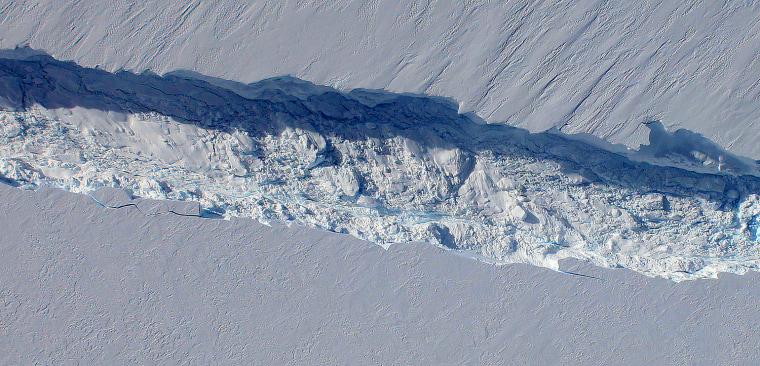
"Our ability to study every move of the iceberg in such detail is thanks to advances in satellite techniques and the use of a variety of measurements. Tommaso Parrinello, CryoSat Mission Manager at the European Space Agency, said: By combining these measurements, the iceberg's area, thickness, and volume change were determined. Meanwhile, the iceberg's thickness change was measured using CryoSat-2 and ICESat-2 altimetry. The iceberg's area change was recorded using a combination of Sentinel-1, Sentinel-3, and MODIS imagery. The journey of A68A has been charted using observations from 5 different satellites. "Because A68A took a common route across the Drake Passage, we hope to learn more about icebergs taking a similar trajectory, and how they influence the polar oceans." "This is a huge amount of melt water, and the next thing we want to learn is whether it had a positive or negative impact on the ecosystem around South Georgia" At its peak, the iceberg was melting at a rate of 7 metres per month, and in total it released a staggering 152 billion tonnes of fresh water and nutrients.Īnne Braakmann-Folgmann, a researcher at CPOM and PhD candidate at the University of Leeds' School of Earth and Environment, is lead author of the study. This process influences the local ocean circulation and fosters biological production around the iceberg.


When icebergs detach from ice shelves, they drift with the ocean currents and wind while releasing cold fresh meltwater and nutrients as they melt. Nevertheless, the ecosystem and wildlife around South Georgia will certainly have felt the impact of the colossal iceberg's visit. By the time it reached the shallow waters around South Georgia, the iceberg's keel had reduced to 141 metres below the ocean surface, shallow enough to avoid the seabed which is around 150 metres deep. However, this new study reveals that it collided only briefly with the sea floor and broke apart shortly afterwards, making it less of a risk in terms of blockage. All of these potential outcomes were feared when A68A approached South Georgia. This can be disruptive in several different ways the scour marks can destroy fauna, and the berg itself can block ocean currents and predator foraging routes. If an iceberg's keel is too deep it can get stuck on the sea floor. Frequent measurements allowed us to follow every move and break-up of the berg as it moved slowly northwards through iceberg alley and into the Scotia Sea where it then gained speed and approached the island of South Georgia very closely." "A68 was an absolutely fascinating iceberg to track all the way from its creation to its end. Laura Gerrish, GIS and mapping specialist at BAS and co-author of the study said: Altogether, the iceberg thinned by 67 metres from its initial 235 m thickness, with the rate of melting rising sharply as the berg drifted in the Scotia Sea around South Georgia. However, once it began its northwards journey across Drake Passage it travelled through increasingly warm waters and began to melt.

However, a side effect of the melting was the release of a colossal 152 billion tonnes of fresh water in close proximity to the island - a disturbance that could have a profound impact on the island's marine habitat.įor the first two years of its life, A68A stayed close to Antarctica in the cold waters of the Weddell Sea and experienced little in the way of melting. The authors show that the berg had melted enough as it drifted to avoid damaging the sea floor around South Georgia by running aground. Researchers from the Centre for Polar Observation and Modelling (CPOM) and British Antarctic Survey (BAS) used satellite measurements to chart the A68A iceberg's area and thickness change throughout its life cycle. Around Christmas 2020, the berg received widespread attention as it drifted worryingly close to South Georgia, raising concerns it could harm the island's fragile ecosystem. At 5719 square kilometres in extent - quarter the size of Wales -, it was the biggest iceberg on Earth when it formed and the sixth largest on record. In July 2017, the A68A iceberg snapped off the Larsen-C Ice Shelf on the Antarctic Peninsula and began its epic 3.5 year, 4000 km journey across the Southern Ocean.


 0 kommentar(er)
0 kommentar(er)
